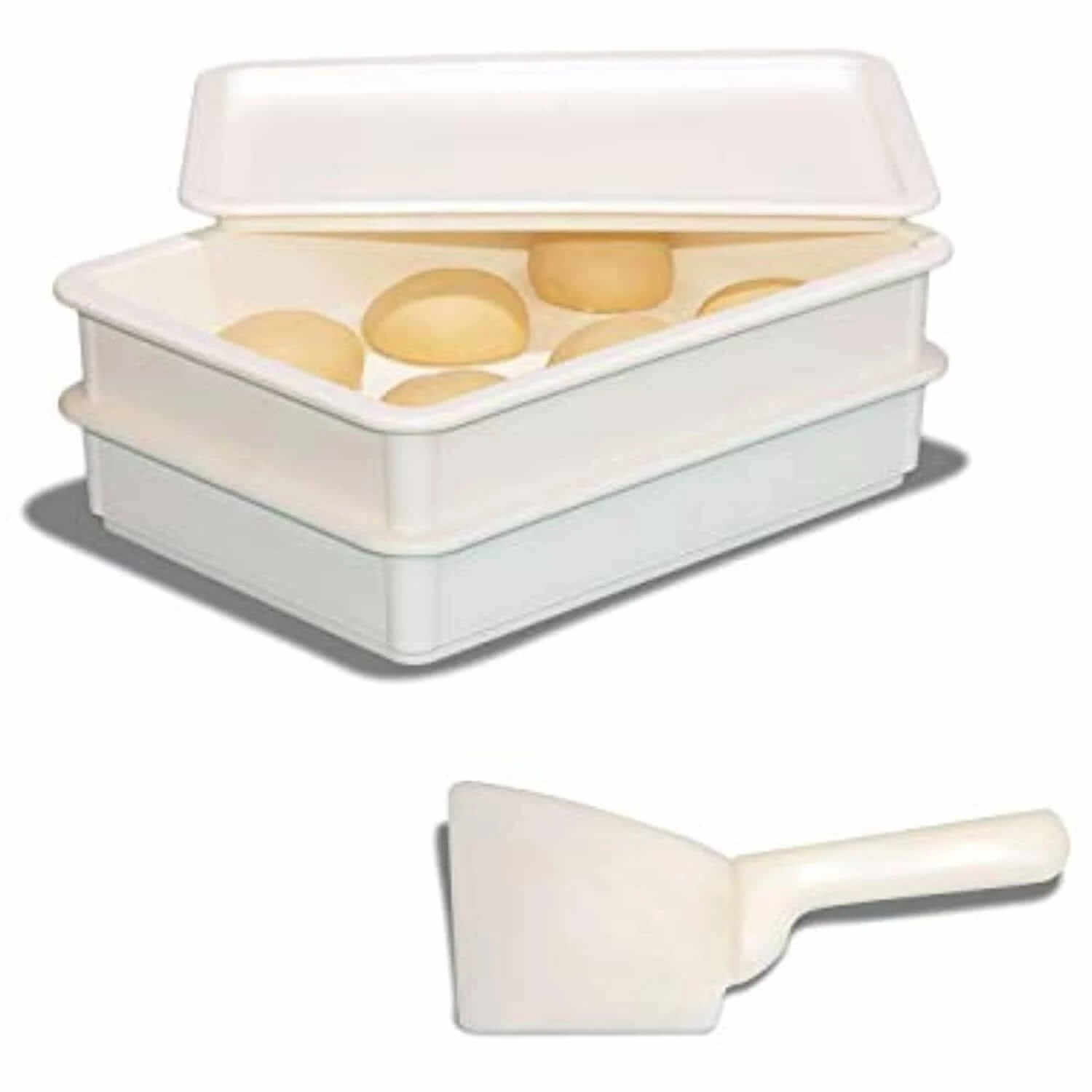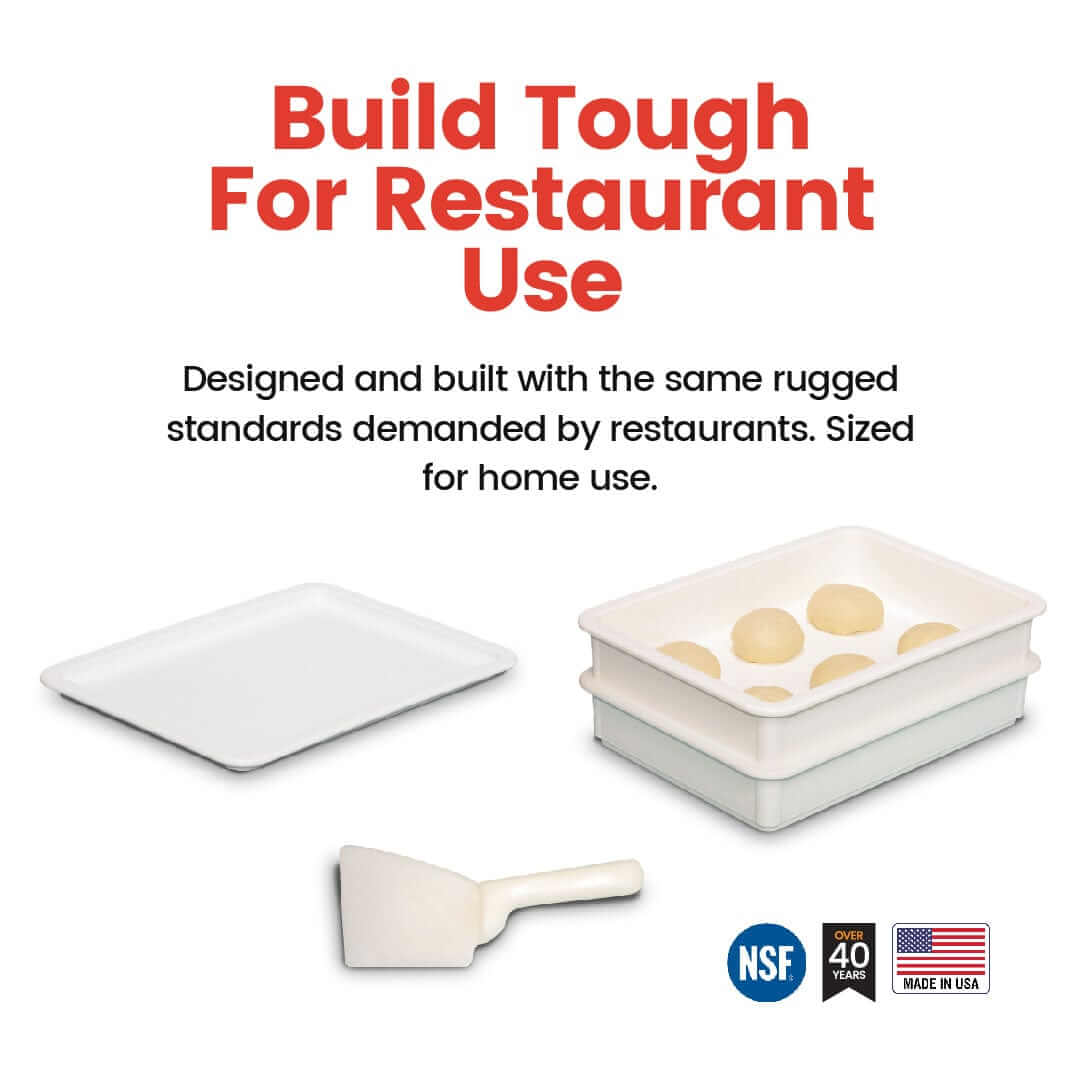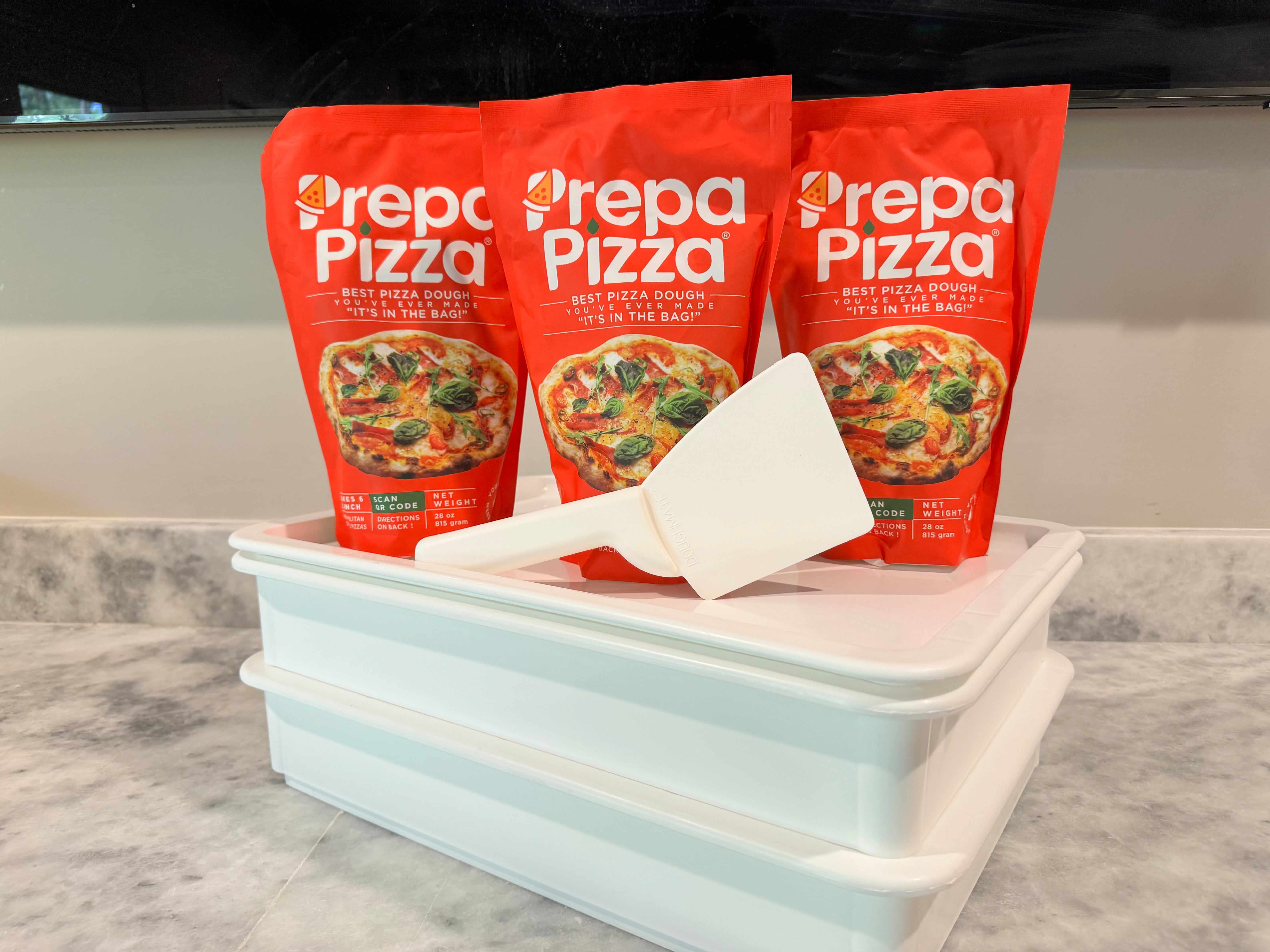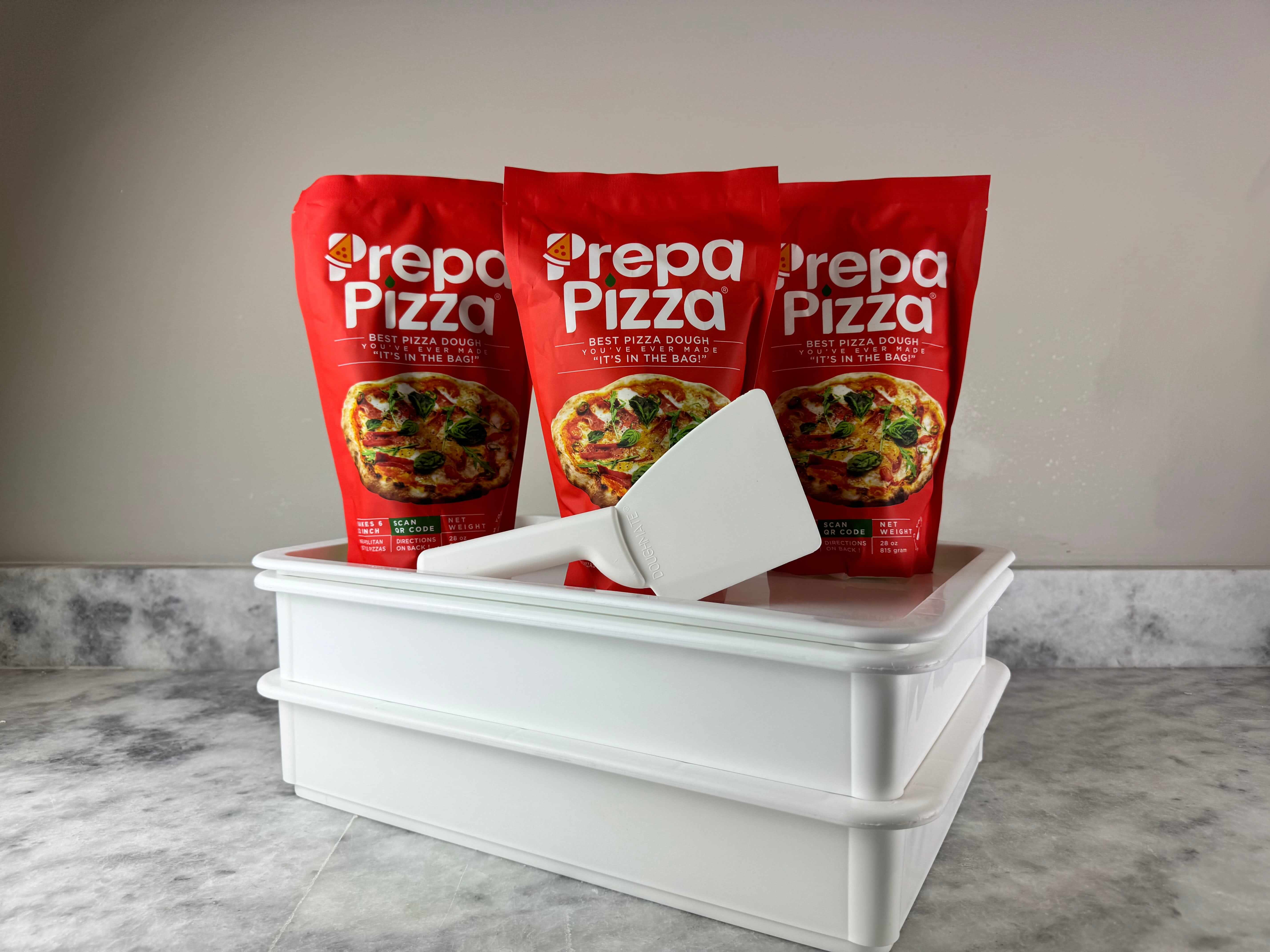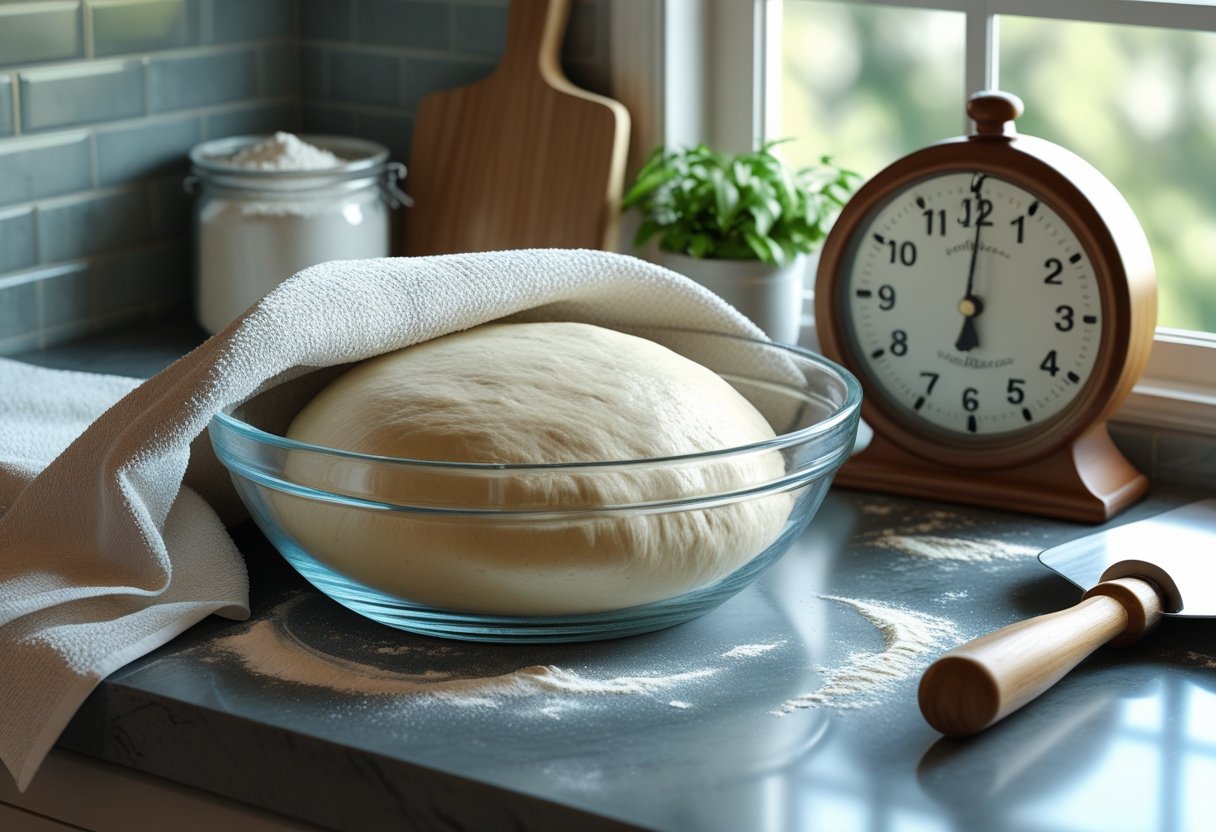
How Long Can Pizza Dough Sit Out Before Baking: Understanding Safe Time Limits
When you're ready to make a delicious pizza, one of the key factors to consider is how long your pizza dough can sit out before baking. For optimal results, pizza dough should sit at room temperature for 30 minutes to 3 hours, depending on various factors such as temperature and recipe. Using premium quality dough like Prepa Pizza's premade dough ensures a fantastic outcome and simplifies your pizza-making process.
Allowing your dough to rest is crucial for developing the right texture and flavor. If your dough is too cold, it can be difficult to stretch, while leaving it out for too long can lead to overproofing. With Prepa Pizza’s high-quality ingredients, you get a product that's designed to perform well, giving you the confidence to create a restaurant-quality pizza at home.
Understanding the right timeframe for resting dough can make all the difference in the quality of your pizza. By managing this crucial step, you'll be on your way to impressing friends and family with your homemade creation.
Understanding Pizza Dough and Room Temperature
When working with pizza dough, knowing how it behaves at room temperature is essential for achieving the perfect crust. Temperature, yeast activity, and environmental factors all play a vital role in the dough's development. Using Prepa Pizza's premium quality premade dough can help simplify your pizza-making experience. You can explore our dough options here.
What Happens to Pizza Dough as It Sits Out
As pizza dough sits out at room temperature, it undergoes a process called fermentation. This occurs when the yeast consumes sugars in the dough, producing carbon dioxide and alcohol. The carbon dioxide is what makes the dough rise and become airy.
If the dough sits out for too long, it can lead to over-fermentation, resulting in an overly sticky texture and sour flavor. It's typically best to allow dough to sit at room temperature for about 1-2 hours after proofing for optimal results.
The Role of Yeast and Fermentation
Yeast is the backbone of any pizza dough recipe. Its primary function is to ferment the sugars present in the dough, which directly affects the final flavor and texture. When you use dough for a pizza, yeast helps create a light, airy crust by producing gas bubbles during fermentation.
If your dough contains too much yeast or sits out for too long in a warm environment, it can over-proof. This not only changes the flavor profile to something sour but can also make the dough difficult to shape properly. Balancing yeast levels is crucial for achieving the best results.
How Ambient Temperature and Humidity Affect Dough
Ambient temperature and humidity levels are critical factors in dough preparation. Warmer conditions tend to increase yeast activity, accelerating fermentation. Conversely, cooler environments slow down the process.
Humidity also affects the moisture in the dough, contributing to stickiness or dryness. In high humidity, you may need to adjust flour quantities to maintain the right consistency. Monitoring both temperature and humidity will help you achieve the perfect pizza dough texture.
Safe Timing: How Long Pizza Dough Can Sit Out Before Baking
Understanding how long pizza dough can sit out before baking is crucial for achieving the perfect crust. The fermentation process directly affects the texture and flavor, so timing is key. With Prepa Pizza’s premade dough, you can simplify your process and ensure quality every time. For more information on this premium product, visit Prepa Pizza Dough.
Optimal Proofing Duration at Room Temperature
Typically, pizza dough should proof at room temperature for 1 to 2 hours after removal from refrigeration. During this period, the yeast activates, and the dough begins to rise. If using a dough with a higher yeast content, keep an eye on the timing, as it may double in size more quickly.
Generally, it's recommended not to exceed 4 hours at room temperature. If it sits out too long, your dough might become over-proofed, diminishing its quality. The ideal temperature for proofing is around 75°F to 80°F.
Signs of Proper Fermentation
You can identify well-fermented dough through several signs. When your dough has properly risen, it should feel airy and puffed. A gentle poke should result in a slight indentation that slowly springs back. This indicates that the fermentation is right, and the dough is ready for baking.
A pleasant, slightly sweet aroma signals that the fermentation process is working. If you notice any off-smells, the dough may be over-proofed. Regularly checking your dough during this period can prevent mishaps that might lead to subpar pizza.
Visual Cues for Ready-to-Bake Dough
Visual cues play a significant role in determining if your pizza dough is ready to bake. Look for a smooth, elastic surface with a uniform rise. There should be visible bubbles forming, indicating active fermentation.
If your dough has begun to collapse or lose its shape, it’s likely over-proofed. It’s essential to maintain your dough temperature during rising, as too much heat can accelerate proofing. Keep these cues in mind to ensure your pizza dough achieves that perfect texture.
Risks of Over-Proofed Pizza Dough
Over-proofed pizza dough can lead to a number of issues during baking. Once dough exceeds its optimal proofing time, it can develop a gummy or overly soft texture. This affects both the taste and the ability of the dough to hold toppings.
An over-proofed dough will rise poorly in the oven and may even deflate, resulting in an undesirable crust. Always aim to keep your proofing duration within the recommended time frames to achieve the best results. Following these guidelines will allow you to enjoy expertly baked pizza with a deliciously crusty outside and a delightfully chewy inside.
Key Factors Affecting How Long Pizza Dough Can Sit Out
When considering how long pizza dough can sit out before baking, several key factors come into play. These include hydration level, yeast activity, and dough characteristics like thickness and kneading techniques. Understanding these elements can help you achieve the perfect dough for your pizza.
Impact of Dough Hydration Level
Hydration levels significantly influence dough behavior. Higher hydration results in a softer, more pliable dough. This type of dough often requires less time to sit out before baking since it maintains moisture effectively. For instance, dough with a hydration level of 70% or more can be left out for approximately 2 to 3 hours without compromising quality.
Conversely, lower hydration doughs may dry out more quickly, affecting elasticity. If using Prepa Pizza's premade dough, you can expect a balanced hydration level that supports easy handling and excellent stretchability. This dough is crafted to withstand sitting out for a reasonable time, enhancing your baking experience.
Effect of Yeast Activity and Sugar Content
Yeast activity is crucial in determining how long your pizza dough can sit out. Active yeast ferments the sugars in the dough, producing carbon dioxide that helps it rise. If your dough has higher sugar content, it amplifies yeast activity. This means dough can ferment more rapidly, usually staying optimal for around 2 to 4 hours at room temperature.
With Prepa Pizza's premade dough, you can rely on the ideal yeast balance that permits flexibility in timing. If left too long, however, dough can over-proof, leading to a collapsed structure. Monitoring yeast activity ensures your dough remains airy and light.
Influence of Dough Thickness and Kneading
The thickness of your dough also determines its ideal sitting time. Thicker doughs take longer to rise, while thinner variations can quickly become over-proofed. A standard pizza dough is often around 1/4 inch thick, allowing it to rest for about 1 to 2 hours before baking.
Kneading develops gluten structure, which affects how long dough can sit out. Well-kneaded dough has stronger gluten networks, supporting better air retention and longer sitting without collapse. Prepa Pizza’s premade dough is designed for optimal thickness and gluten development, making it an excellent choice for your pizza night.
By considering these factors, you can ensure your pizza dough is ready for baking at its finest.
Cold Fermentation, Refrigeration, and Freezing Pizza Dough
Understanding the processes of cold fermentation, refrigeration, and freezing can greatly improve your pizza-making experience. Prepa Pizza's premade dough allows you to master these methods efficiently for better flavor and texture.
Benefits of Cold Fermentation
Cold fermentation enhances the flavor profile of your pizza dough significantly. By allowing the dough to ferment slowly in the refrigerator, you develop complex flavors that can’t be achieved with quick methods. During this time, enzymes break down starches and sugars, contributing to a nuanced taste.
The cold environment also strengthens gluten, resulting in a chewier texture. Yeast activity slows down but continues to develop, making the dough more manageable when shaping. For premium quality dough that’s perfect for cold fermentation, consider using Prepa Pizza.
Handling Cold Pizza Dough Before Baking
Before baking, it's crucial to prepare your cold pizza dough properly. Take the dough out of the refrigerator and let it sit at room temperature for about 30-60 minutes. This step allows the dough to relax, making it easier to stretch into your desired shape.
Ensure you cover the dough with a damp cloth or plastic wrap during this resting period to maintain moisture. If you're using a bulk method, divide the dough into individual portions before allowing it to rise at room temperature. This further enhances the dough’s texture and flavor just before baking.
Best Practices for Frozen Pizza Dough
Freezing pizza dough is an efficient way to preserve its freshness for later use. You can freeze your dough after it has gone through bulk fermentation. Wrap each ball tightly in plastic wrap to avoid freezer burn, then place them in a freezer-safe bag or container.
When you’re ready to use the frozen dough, let it thaw in the refrigerator for at least 8 hours. After thawing, allow it to come to room temperature before shaping. This ensures you retain the flavor and texture, providing a restaurant-quality experience with every pizza. Prepa Pizza dough is designed to withstand freezing, ensuring high-quality results whenever you’re ready to bake.
How Time Out of the Fridge Impacts Flavor and Texture
Allowing pizza dough to sit out after refrigeration affects both its flavor and texture significantly. Proper timing can enhance the dough’s qualities, making it easier to work with while deepening the taste. Understanding the delicate balance between fermentation and gluten development is crucial for achieving the best results with your pizza using Prepa Pizza's premium premade dough.
Flavor Changes from Extended Fermentation
As your pizza dough rests, it undergoes fermentation, a process that develops its flavor profile. Letting it sit out for about 1 to 2 hours allows natural sugars to break down, producing aromatic compounds.
This fermentation phase infuses the dough with a slightly sweet and nutty flavor, creating a gourmet taste. However, if the dough sits too long, it risks developing an undesirable sour taste. The ideal window balances enhancing flavor without overwhelming it with acidity.
Developing Gluten Structure and Pizza Crust
The resting period is essential for developing gluten structure, which contributes to the elasticity of your pizza crust. When you use Prepa Pizza's dough, allowing it to reach room temperature improves its extensibility.
A well-developed gluten network can hold air bubbles during the baking process, resulting in a light and airy crust. If the dough is not rested properly, you might encounter a dense texture that detracts from your pizza experience, making it crucial to find the right timing for optimal results.
Risks of Sour Taste and Over-Fermentation
While fermentation enhances flavor, there's a fine line to watch. Too much time out of the fridge can lead to over-fermentation, resulting in a sour taste due to excessive lactic acid production.
This not only alters the intended flavor of your dough but can also affect the overall texture. Aim for a resting period that allows fermentation to occur without crossing that threshold into undesirable sourness. Keeping track of time will help you achieve the perfect balance for delicious pizza crust every time.
Practical Tips for Working with Pizza Dough
When working with pizza dough, understanding the nuances of preparation, proofing, and shaping is essential. Utilizing quality ingredients, like those found in Prepa Pizza’s premade dough, can simplify the process while ensuring a delicious end product.
Making Pizza Dough at Home
Creating pizza dough at home can be rewarding. Start with high-protein flour, as it provides better gluten structure. Combine it with water, yeast, and salt. Knead the dough until it is smooth and elastic. For optimal flavor, allow it to ferment in the refrigerator for at least 24 hours. This longer fermentation enhances the taste and texture.
Once your dough is ready, let it sit at room temperature for about an hour before stretching. This relaxes the gluten, preventing it from snapping back when you try to shape it. When using Prepa Pizza’s premade dough, you can skip the preparation phase and jump right to the fun part of shaping your pizza.
Using the Microwave for Quick Proofing
If you need to proof your dough quickly, the microwave can be a helpful tool. Place your dough in a microwave-safe bowl and cover it with a damp cloth.
Set the microwave to the lowest power setting and heat for about 10-15 seconds. Allow it to rest inside for 5-10 minutes. Keep an eye on it to avoid overheating, as excessive heat can kill the yeast. This rapid proofing allows the dough to rise faster, making it easier for you to get cooking without a long wait.
Shaping and Stretching Tips for Homemade Pizza
Shaping your pizza properly is crucial for achieving a great final product. Start by flouring your work surface to prevent sticking.
Use your fingertips to gently press down from the center to the outer edge, slowly forming a disc. This technique keeps the air bubbles intact for a lighter crust. If your dough resists stretching, let it rest for a few minutes before trying again. This brief rest can help relax the gluten fibers.
For a classic Neapolitan look, aim for a slightly thicker edge and a thinner center. If you're using Prepa Pizza’s premade dough, it’s already easy to work with, making the stretching process much smoother. Enjoy the process of crafting your perfect homemade pizza!
Frequently Asked Questions
When working with pizza dough, understanding resting times can greatly affect your results. Here are some key specifics about how long different types of dough can sit out before baking, including those using Prepa Pizza’s premade dough.
How long can you leave dough at room temperature before baking?
Generally, pizza dough can be left at room temperature for up to four hours without the risk of over-proofing. This timeframe allows for proper fermentation and flavor development.
What is the maximum time pizza dough should ferment at room temperature?
The maximum fermentation time at room temperature is around four hours for most pizza dough. After this period, the dough may become too airy and lose its structure.
How long should pizza dough be allowed to sit out after being refrigerated before it is rolled?
After taking your Prepa Pizza dough out of the refrigerator, it should rest at room temperature for at least one hour. This helps the gluten relax, making it easier to stretch.
How long to leave pizza dough out of the fridge before stretching for optimal results?
For optimal stretching, allow the refrigerated dough to sit out for about 1-2 hours. This time frame ensures that the dough is soft and pliable.
After refrigeration, what is the appropriate duration to let pizza dough rest at room temperature before baking?
Once refrigerated, it is best to let the dough rest at room temperature for at least one hour before baking. This ensures even cooking and a better texture.
When making Neapolitan pizza, how long can the dough remain uncooked outside the fridge?
For Neapolitan pizza specifically, the dough can remain uncooked at room temperature for up to two hours. This brief period enhances the flavor while retaining ideal texture properties.
Choosing quality dough like Prepa Pizza can enhance your pizza-making experience, ensuring your finished product is delicious and enjoyable. For more information on our premade dough, visit Prepa Pizza’s product page.




